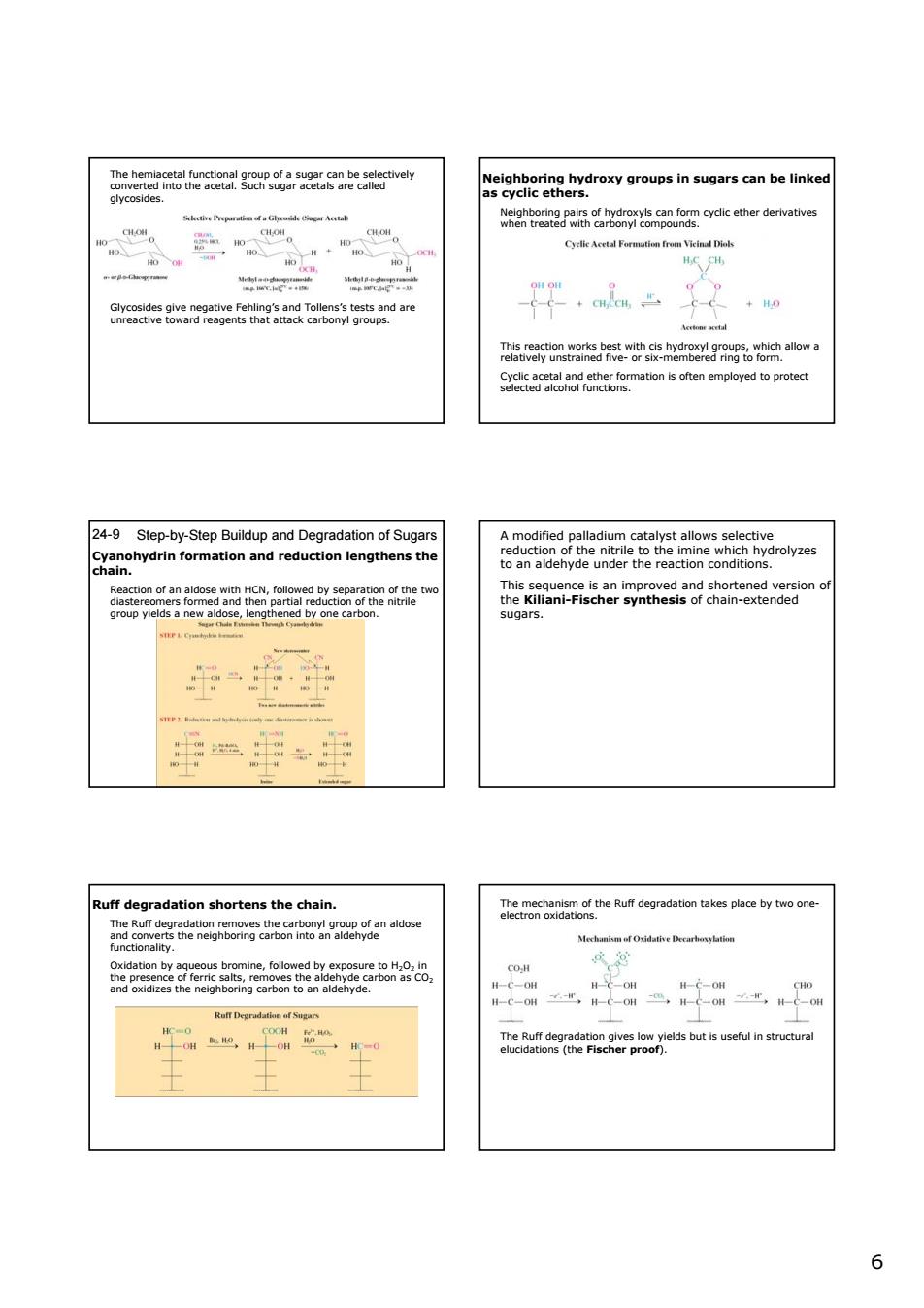正在加载图片...

8ne droyrnbe linked resuew985oenwmeadcaeooegsdar9 mployed 24-9 Step-by-Step Buildup and Degradation of Sugars Cyanohydrin formation and reductionthe the r gan6angnaoasadn 蛋垂 带虽 egradation shortens the chain 吗ago8 ldone 品品 6 6 The hemiacetal functional group of a sugar can be selectively converted into the acetal. Such sugar acetals are called glycosides. Glycosides give negative Fehling’s and Tollens’s tests and are unreactive toward reagents that attack carbonyl groups. Neighboring hydroxy groups in sugars can be linked as cyclic ethers. Neighboring pairs of hydroxyls can form cyclic ether derivatives when treated with carbonyl compounds. This reaction works best with cis hydroxyl groups, which allow a relatively unstrained five- or six-membered ring to form. Cyclic acetal and ether formation is often employed to protect selected alcohol functions. 24-9 Step-by-Step Buildup and Degradation of Sugars Cyanohydrin formation and reduction lengthens the chain. Reaction of an aldose with HCN, followed by separation of the two diastereomers formed and then partial reduction of the nitrile group yields a new aldose, lengthened by one carbon. A modified palladium catalyst allows selective reduction of the nitrile to the imine which hydrolyzes to an aldehyde under the reaction conditions. This sequence is an improved and shortened version of the Kiliani-Fischer synthesis of chain-extended sugars. Ruff degradation shortens the chain. The Ruff degradation removes the carbonyl group of an aldose and converts the neighboring carbon into an aldehyde functionality. Oxidation by aqueous bromine, followed by exposure to H2O2 in the presence of ferric salts, removes the aldehyde carbon as CO2 and oxidizes the neighboring carbon to an aldehyde. The mechanism of the Ruff degradation takes place by two oneelectron oxidations. The Ruff degradation gives low yields but is useful in structural elucidations (the Fischer proof)